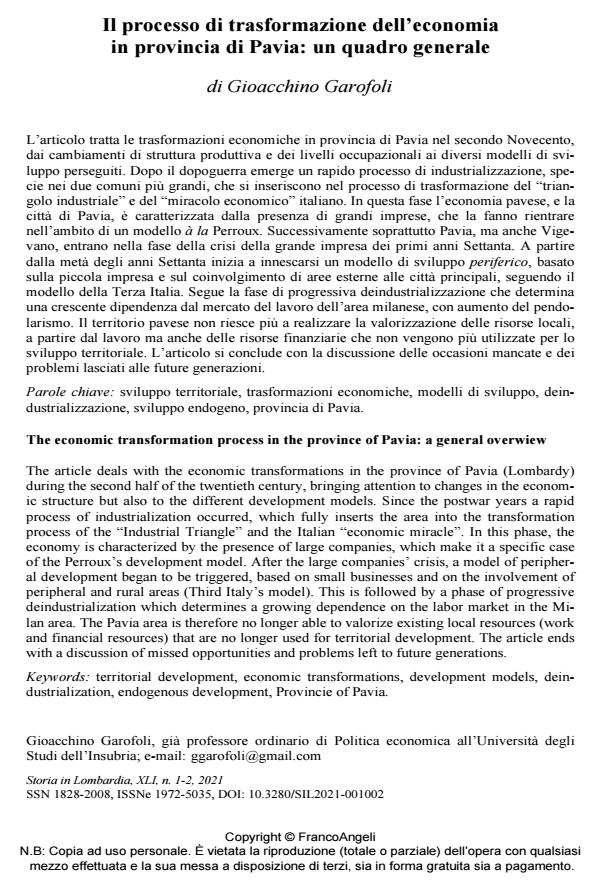The economic transformation process in the province of Pavia: a general overwiew
Journal title STORIA IN LOMBARDIA
Author/s Gioacchino Garofoli
Publishing Year 2022 Issue 2021/1-2
Language Italian Pages 26 P. 9-34 File size 167 KB
DOI 10.3280/SIL2021-001002
DOI is like a bar code for intellectual property: to have more infomation
click here
Below, you can see the article first page
If you want to buy this article in PDF format, you can do it, following the instructions to buy download credits

FrancoAngeli is member of Publishers International Linking Association, Inc (PILA), a not-for-profit association which run the CrossRef service enabling links to and from online scholarly content.
The article deals with the economic transformations in the province of Pavia (Lombardy) during the second half of the twentieth century, bringing attention to changes in the economic structure but also to the different development models. Since the postwar years a rapid process of industrialization occurred, which fully inserts the area into the transformation process of the “Industrial Triangle” and the Italian “economic miracle”. In this phase, the economy is characterized by the presence of large companies, which make it a specific case of the Perroux’s development model. After the large companies’ crisis, a model of peripheral development began to be triggered, based on small businesses and on the involvement of peripheral and rural areas (Third Italy’s model). This is followed by a phase of progressive deindustrialization which determines a growing dependence on the labor market in the Milan area. The Pavia area is therefore no longer able to valorize existing local resources (work and financial resources) that are no longer used for territorial development. The article ends with a discussion of missed opportunities and problems left to future generations.
Keywords: territorial development, economic transformations, development models, deindustrialization, endogenous development, Provincie of Pavia.
- Il Parti socialiste di François Mitterrand e la Pavia di Elio Veltri (1973-1980) Samuele Sottoriva, in STORIA IN LOMBARDIA 1/2024 pp.36
DOI: 10.3280/SIL2024-001002
Gioacchino Garofoli, Il processo di trasformazione dell’economia in provincia di Pavia: un quadro generale in "STORIA IN LOMBARDIA" 1-2/2021, pp 9-34, DOI: 10.3280/SIL2021-001002